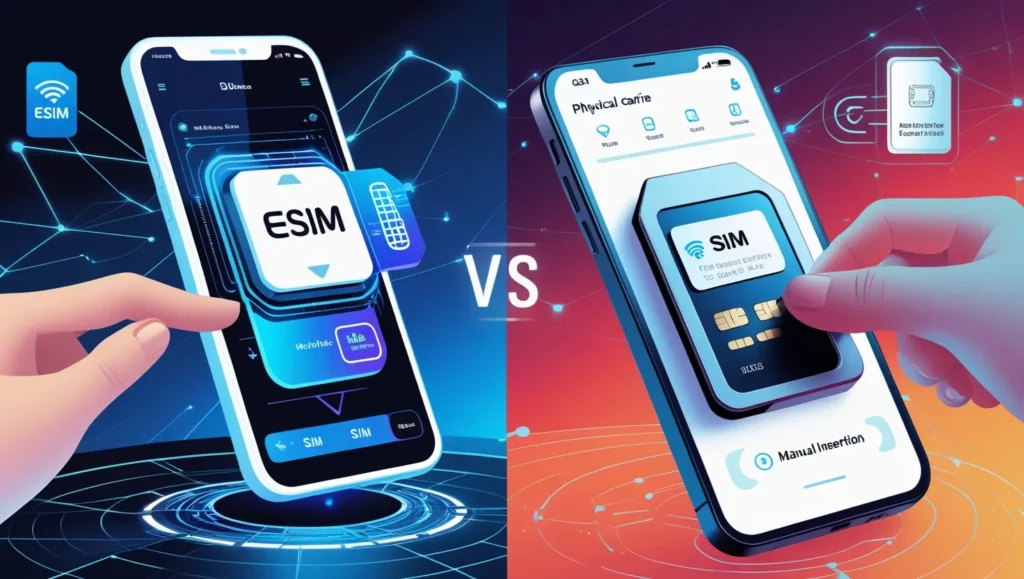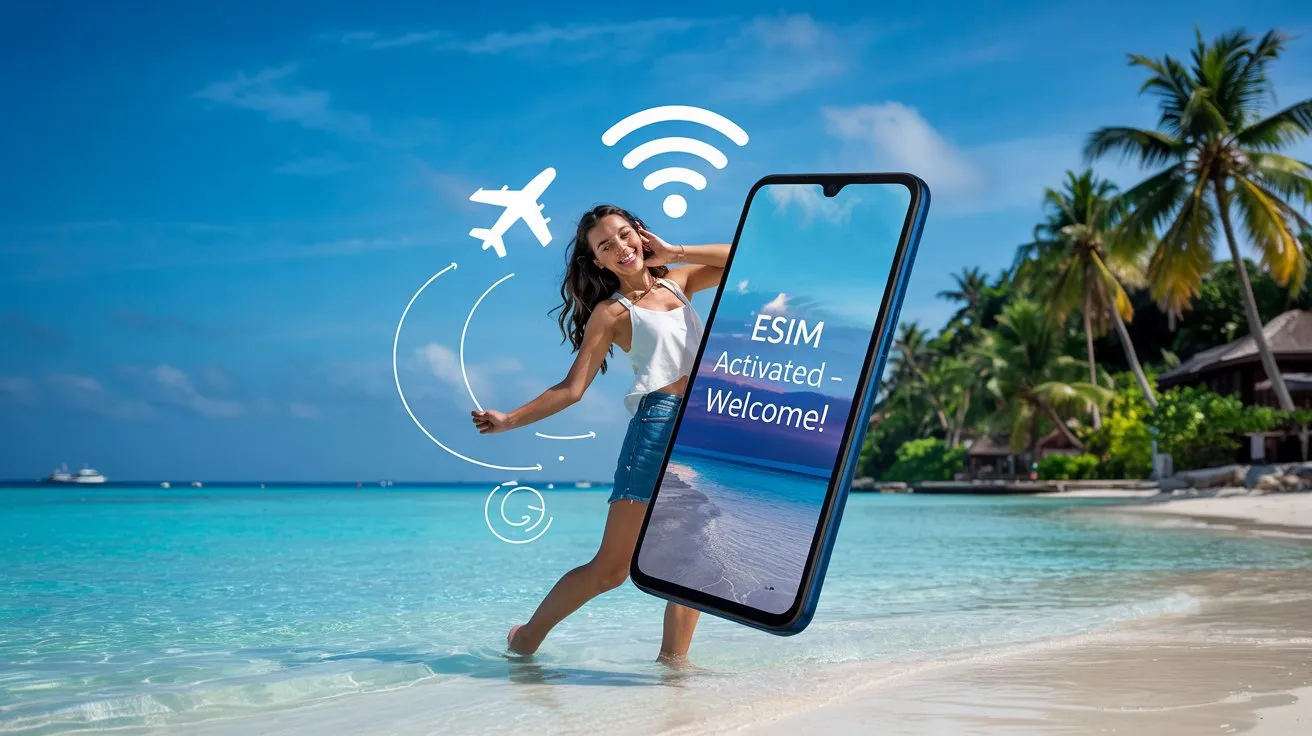Table of Contents
Introduction
In today’s fast-paced digital world, staying connected is more crucial than ever. Whether you are traveling, switching carriers, or upgrading your phone, you’ve likely come across the term eSIM. But how does an eSIM work, and is it a better option than a traditional physical SIM?
This article will break down everything you need to know about eSIM vs physical SIM, including how they work, their pros and cons, and why you might prefer one over the other.
What is an eSIM ?
An eSIM (embedded SIM) is a digital SIM card that is built directly into your device. Unlike a traditional physical SIM, which requires a small plastic card inserted into your phone, an eSIM is pre-installed in compatible devices and can be activated remotely.
Instead of swapping out SIM cards when you switch carriers or travel abroad, you can simply download a new carrier profile, making the process much more convenient and seamless.
How Does eSIM Work ?
The technology behind eSIM is simple yet highly efficient. Instead of relying on a removable chip, an eSIM functions through software that allows multiple carrier profiles to be stored on a single device. Here’s how it works:
- Carrier Activation: When you sign up for a mobile plan, your carrier provides a QR code or activation details.
- Profile Download: You scan the QR code or enter the necessary information, and your device downloads the carrier’s profile.
- Seamless Switching: You can switch between different carrier profiles stored on your device without needing to swap SIM cards physically.
This advanced capability is why many modern devices, especially high-end smartphones and smartwatches, are adopting eSIM over physical SIM.
eSIM vs Physical SIM: Key Differences
Both eSIMs and physical SIM cards serve the same purpose—connecting your device to a mobile network. However, they differ in several ways:
1. Convenience
- eSIM: No need to handle small SIM cards, visit carrier stores, or wait for shipping.
- Physical SIM: Requires manual insertion and removal, which can be inconvenient, especially while traveling.
2. Device Compatibility
- eSIM: Found in newer smartphones, smartwatches, tablets, and some laptops, check the list here.
- Physical SIM: Works with almost every mobile device, including older models.
3. Switching Carriers
- eSIM: Allows quick switching between carriers without changing SIM cards.
- Physical SIM: Requires purchasing and installing a new SIM card for each carrier.
4. Security
- eSIM: Cannot be physically removed, reducing the risk of theft or loss.
- Physical SIM: Can be stolen or misplaced, potentially leading to security risks.
5. Storage Capacity
- eSIM: Supports multiple carrier profiles on one device.
- Physical SIM: Limited to one carrier at a time.
Advantages of Using e SIM Over Physical SIM
The growing adoption of eSIM technology is not without reason. Here are some key benefits of eSIM over physical SIM:
1. Better for Travelers
If you frequently travel, an e SIM makes switching to a local network effortless. Instead of buying and inserting a new SIM card, you can simply add a temporary plan via your device’s settings.
2. More Reliable & Durable
Since eSIMs are embedded within devices, there’s no risk of physical damage, dust, or losing them, unlike traditional SIM cards.
3. Supports Dual SIM Functionality
Many modern smartphones with eSIM support dual SIM mode, allowing you to use both an eSIM and a physical SIM simultaneously. This feature is perfect for balancing work and personal phone numbers.
4. Environmentally Friendly
Traditional SIM cards require plastic manufacturing and packaging. Switching to eSIM technology reduces plastic waste, making it a more sustainable option.
Downsides of eSIM
Despite its advantages, eSIM technology has a few drawbacks:
- Limited Compatibility: Not all devices support eSIM yet, so older phones still require a physical SIM.
- Carrier Support Variability: Some mobile carriers may not offer eSIM services, especially in less-developed regions.
- Device Transfer Challenges: If you switch phones, transferring an eSIM profile can be less straightforward than swapping a physical SIM card.
Should You Switch to eSIM?
The decision between eSIM vs physical SIM depends on your needs:
- If you travel frequently, switch carriers often, or prefer a clutter-free, digital experience, eSIM is a great choice.
- If you use an older phone, want universal compatibility, or prefer having a removable card, sticking with a physical SIM might be better.
How to Activate an eSIM
Activating an eSIM is a straightforward process:
- Check Device Compatibility: Ensure your phone or smartwatch supports eSIM.
- Get a Carrier Plan: Contact your mobile carrier to get an eSIM plan.
- Scan the QR Code: Use your phone’s camera to scan the activation QR code provided by your carrier.
- Follow On-Screen Instructions: Complete the setup and start using your eSIM.
Conclusion: The Future of eSIM Technology
As more smartphone manufacturers and carriers embrace eSIM technology, it is set to become the standard for mobile connectivity. While physical SIM cards are still widely used, the shift towards eSIM offers convenience, security, and flexibility.
If you’re considering upgrading your device, looking into eSIM-compatible smartphones might be a smart move. The choice ultimately depends on your lifestyle, but with the growing eSIM adoption, it’s clear that the future is digital.
Call to Action
Are you ready to make the switch to eSIM? Check with your carrier today to see if your device supports eSIM technology and experience the future of mobile connectivity!



